Direction (1 – 5): Given below pie chart (I) shows distribution of total students (Engineering + Medical) in five college and pie chart (II) shows distribution of total students in Medical. Read the data carefully and answer the questions.
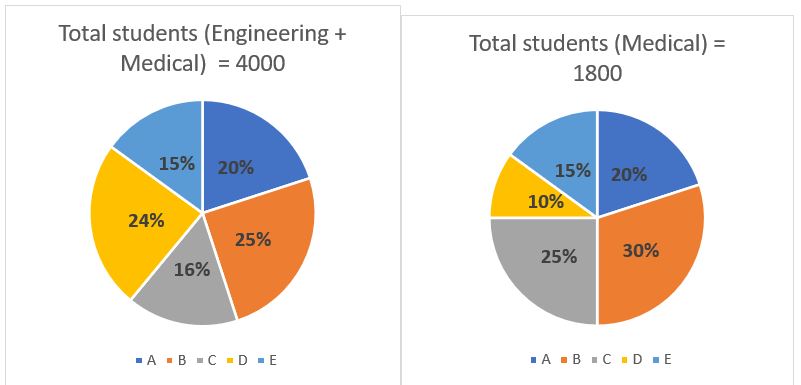
Q1. Find average of engineering students in A, C & E?
(a) 420
(b) 480
(c) 360
(d) 300
(e) 320
Q2. Find the ratio of total engineering students in B & D together to total medical students in A & B together?
(a) 74 : 45
(b) 68 : 45
(c) 52 : 45
(d) 62 : 45
(e) 64 : 45
Q3. If average of total engineering students in B, D & F is 600 and ratio of engineering students to medical students in F is 7 : 5, then find total students in F?
(a) 1260
(b) 960
(c) 840
(d) 1200
(e) 1000
Q4. Find central angle for number of engineering students in A with respect to total students(Medical + Engineering) of all colleges?
(a) 52.8°
(b) 39.6°
(c) 36°
(d) 43.2°
(e) None of these
Q5. Engineering students in E are what percent less than engineering students in A?
(a) 25%
(b) 20%
(c) 15%
(d) 10%
(e) 5%
Direction (6-10) – Read the data carefully and answer the questions.
On Sunday, daily passengers traveling from Delhi to Lucknow increased by ‘2R’% as compared to other days of week and difference between passengers traveling from Delhi to Lucknow on Sunday and other days of week is 960. If number of passengers traveling from Delhi to Lucknow on Sunday decreased by ‘R’ % , then difference between passengers traveling from Delhi to Lucknow on Sunday now and passengers travelling from Delhi to Lucknow on Sunday earlier is Rs. 624. Each passenger traveling from Delhi to Lucknow on other days of week likes either tea or coffee or both. (55% of passengers like coffee and 70% passengers like tea).
Q6. Find value of 6R%?
(a) 120%
(b) 60%
(c) 75%
(d) 90%
(e) None of these
Q7. Find number of passengers travelling from Delhi to Lucknow on other days of week who like either coffee or tea but not both?
(a) 1920
(b) 2400
(c) 2000
(d) 1600
(e) 2080
Q8. If Rs. 3600 invested for two years at the rate of R% p.a. on CI compounding annually, then find amount received after two years?
(a) 4761 Rs.
(b) 4741 Rs.
(c) 4361 Rs.
(d) 4961 Rs.
(e) 4785 Rs.
Q9. If 37.5% passengers traveling from Delhi to Lucknow on Sunday belongs to rural area, then find number of passengers traveling from Delhi to Lucknow on Sunday belongs to urban area?
(a) 1920
(b) 2600
(c) 2000
(d) 1600
(e) 2080
Q10. Find the difference between passengers travelling from Delhi to Lucknow on other days of week who like only tea and who like only coffee?
(a) 360
(b) 400
(c) 620
(d) 550
(e) 480
Direction (11 – 15): the following bar graph shows the number of days taken by different persons to complete a work and line graph shows the percentage of more number of days taken by another different persons to complete the same work with respect to the given four persons.
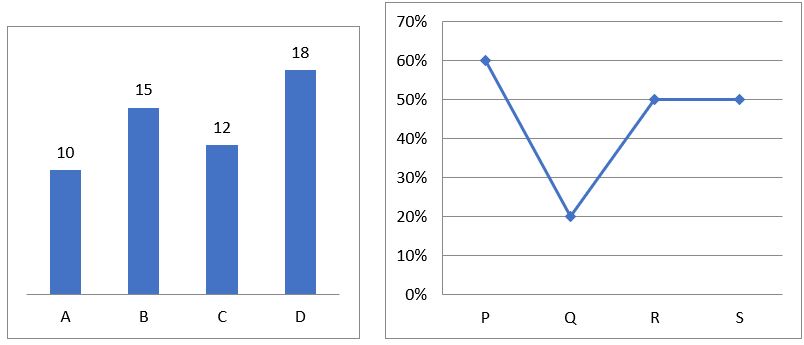
Q11. B & C together started the work and after 5 days, they left the work. What is the time taken by S to complete the remaining work?
(a) 7 ½ days
(b) 6 ¾ days
(c) 3 ¾ days
(d) 5 ¾ days
(e) None of these
Q12. A and R together started to do a work. After some days, A left the work and remaining work was completed by R alone in 4 days. Find the number of days after which A left the work?
(a) 6 days
(b) 4 days
(c) 5 days
(d) 7 ½ days
(e) 10 days.
Q13. R and D under take to do the work for Rs. 5600. With the help of C, they completed the whole work in ![]() . Find the share of C?
. Find the share of C?
(a) Rs. 2400
(b) Rs. 3000
(c) Rs. 1800
(d) Rs. 3600
(e) Rs. 2700
Q14. P & Q started another work which is 150% of the given work. With the help of X, they all together completed this work in 8.64 days. Find the time taken by X alone to do the given work?
(a) 12 days
(b) 20 days
(c) 24 days
(d) 16 days
(e) 18 days
Q15. Y is 100% more efficient than Q. In how many days 2/3 rd of the work will be completed if both of them are working simultaneously?
(a) 5 days
(b) 3 days
(c) 4 days
(d) 3 ½ days
(e) 6 days.
Solutions
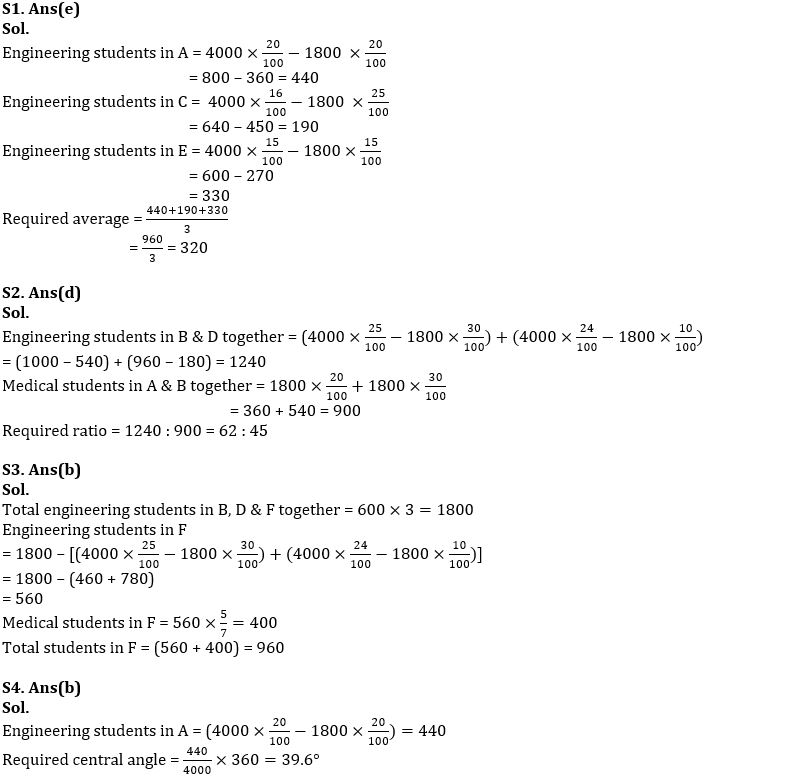

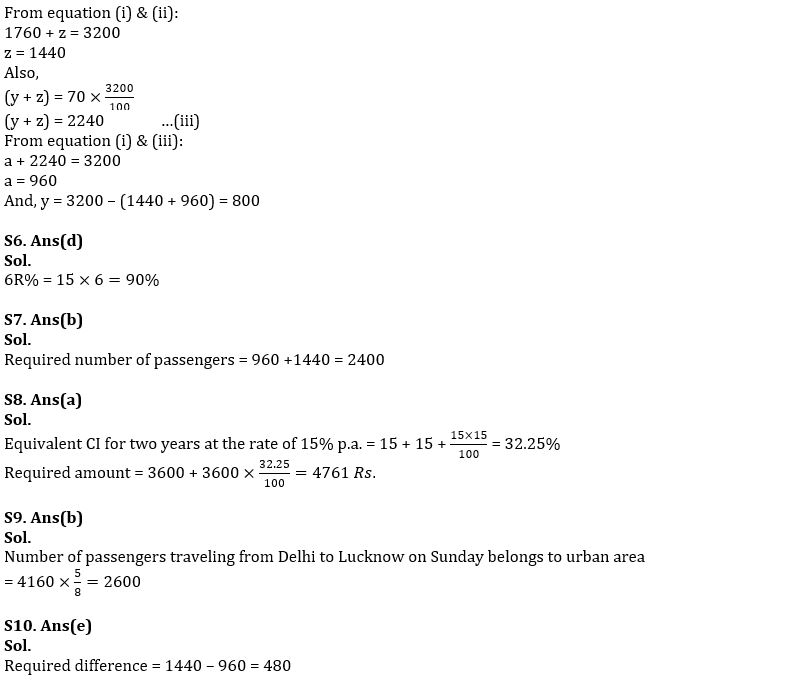
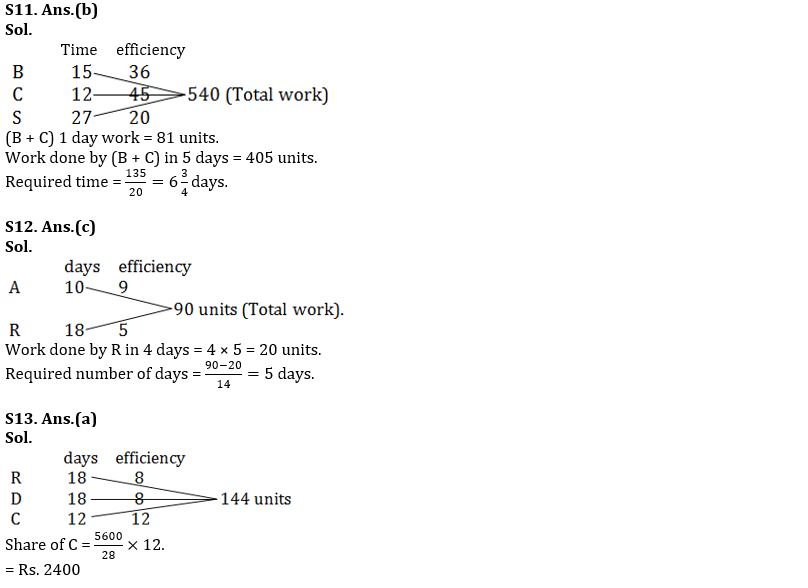
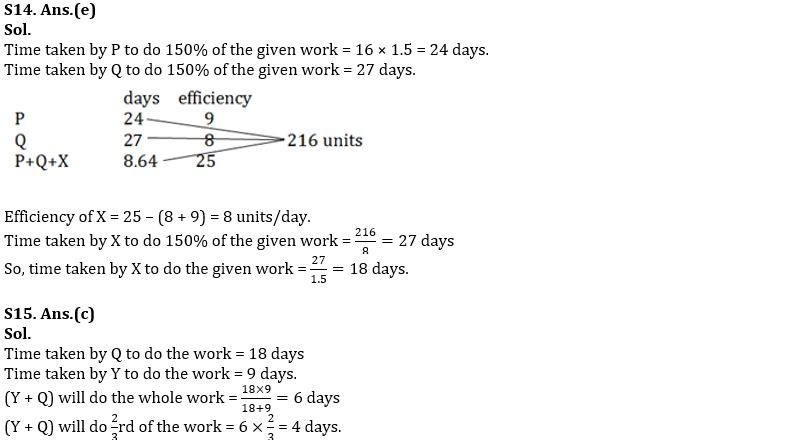


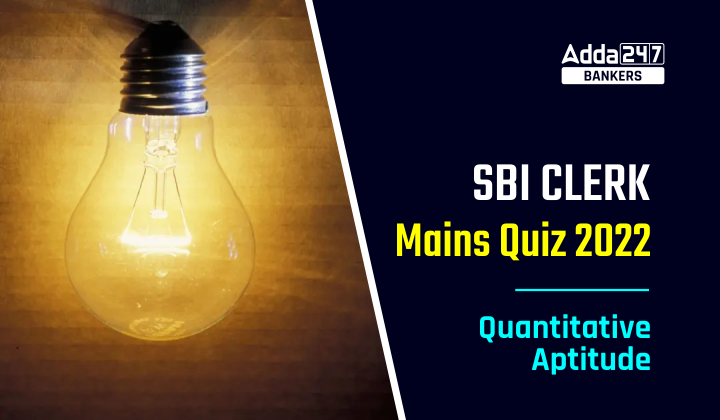


 GA Capsule for SBI Clerk Mains 2025, Dow...
GA Capsule for SBI Clerk Mains 2025, Dow...
 The Hindu Review October 2022: Download ...
The Hindu Review October 2022: Download ...
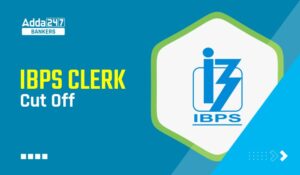 IBPS Clerk Mains Cut Off 2025, Check Sta...
IBPS Clerk Mains Cut Off 2025, Check Sta...







